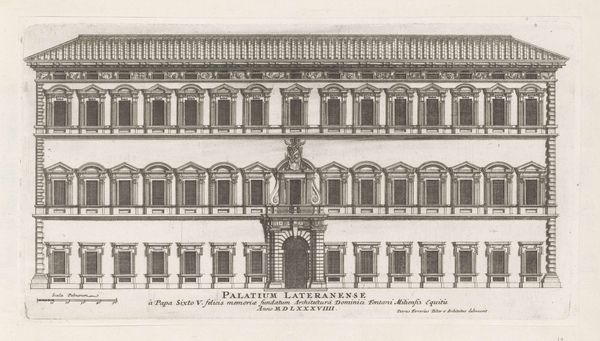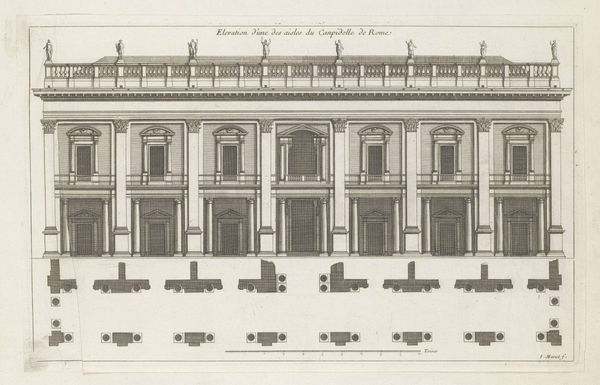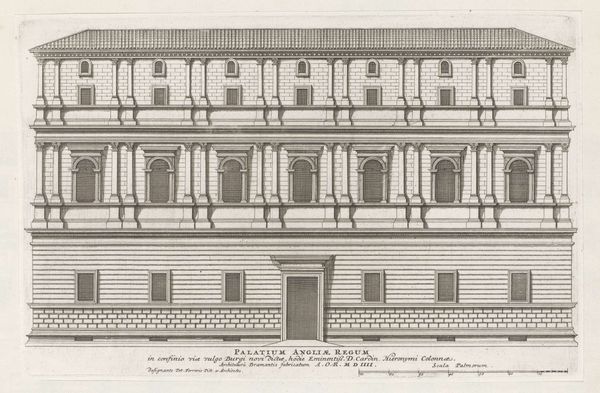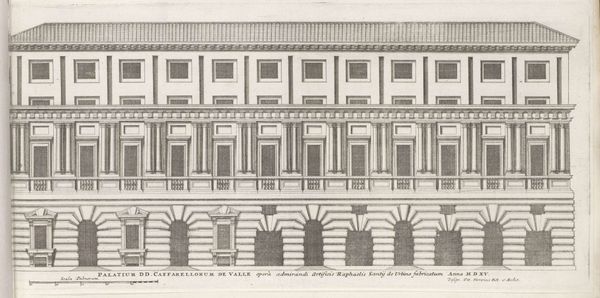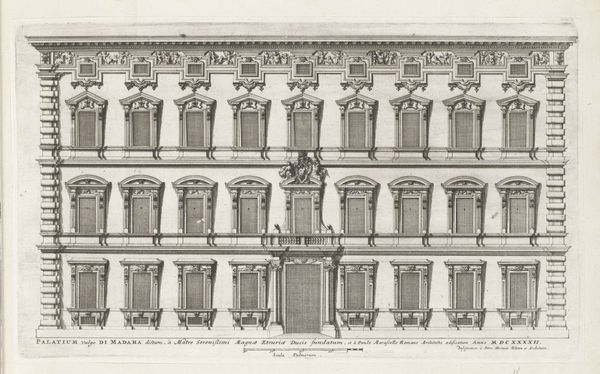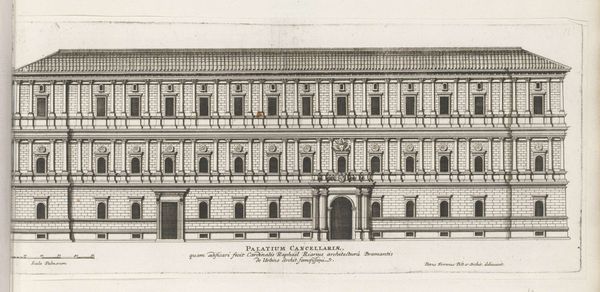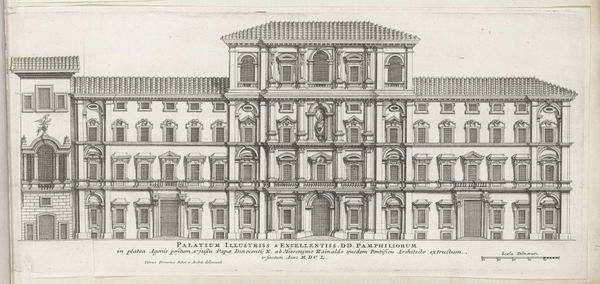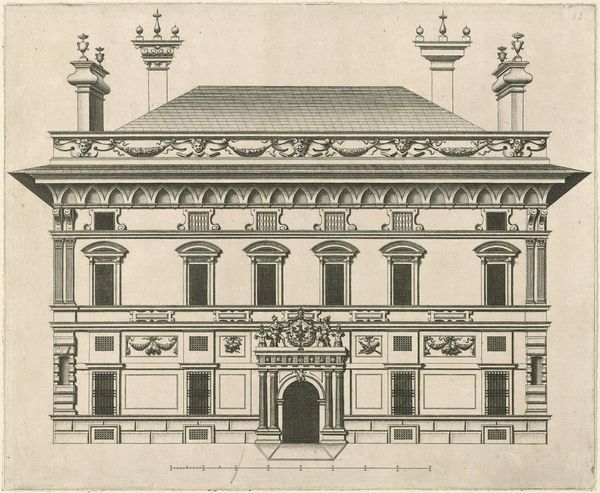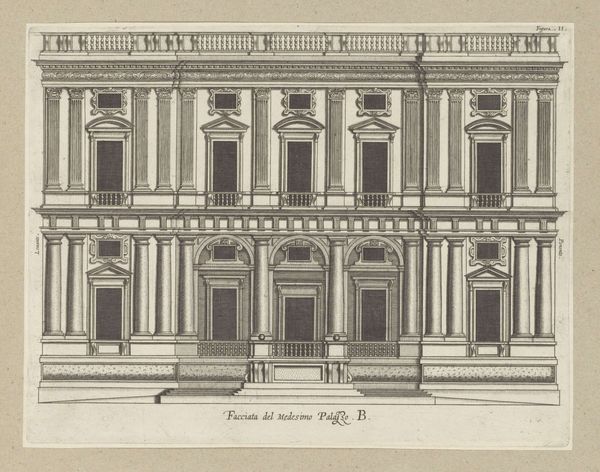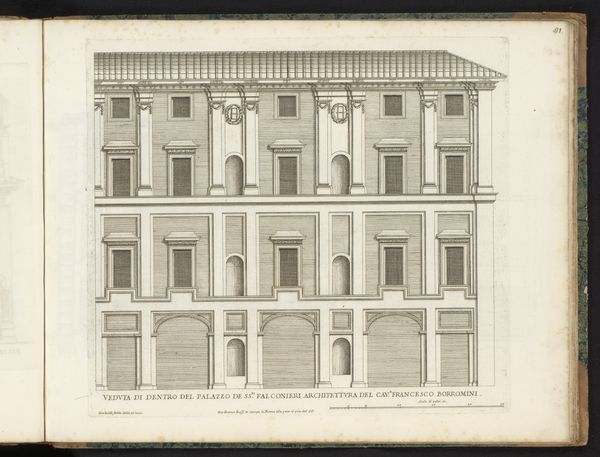
drawing, print, etching, engraving, architecture
#
drawing
#
baroque
# print
#
etching
#
cityscape
#
engraving
#
architecture
#
building
Dimensions: height 242 mm, width 395 mm
Copyright: Rijks Museum: Open Domain
Editor: This print from 1655, "Façade van Palazzo Farnese te Rome" by Giovanni Battista Falda, depicts a stark architectural elevation. The use of etching and engraving gives it an almost diagrammatic feel, and it's dominated by this incredible, rigorous symmetry. What elements of the composition stand out to you? Curator: The rigorous geometry is precisely what captivates. Consider the tripartite division of the façade, a clear application of classical proportion. Notice the meticulous repetition of fenestration, offset only by the centralized papal crest. Does this ordered sequence produce a sense of harmony, or something else? Editor: Harmony, I think, but there’s also a feeling of almost oppressive control… Curator: Precisely. The image's power lies in this tension: the beautifully rendered details set against the unyielding structure. We could analyze this facade as a manifestation of power – papal power, specifically. Consider the horizontal lines formed by the balconies; how do they contribute to the overwhelming impact? Editor: They reinforce it, really clamping down each level, visually weighing it down and drawing your eye along the width of the building and the sheer amount of windows… Curator: And, ultimately, towards that central emblem. A masterful articulation of architectural form, isn't it? Editor: Definitely. I had thought only of its symmetry before, but I'm now also thinking of this subtle tension and assertion of control. Thanks! Curator: My pleasure; analyzing such a potent symbol visually clarifies a good deal about the period.
Comments
No comments
Be the first to comment and join the conversation on the ultimate creative platform.
